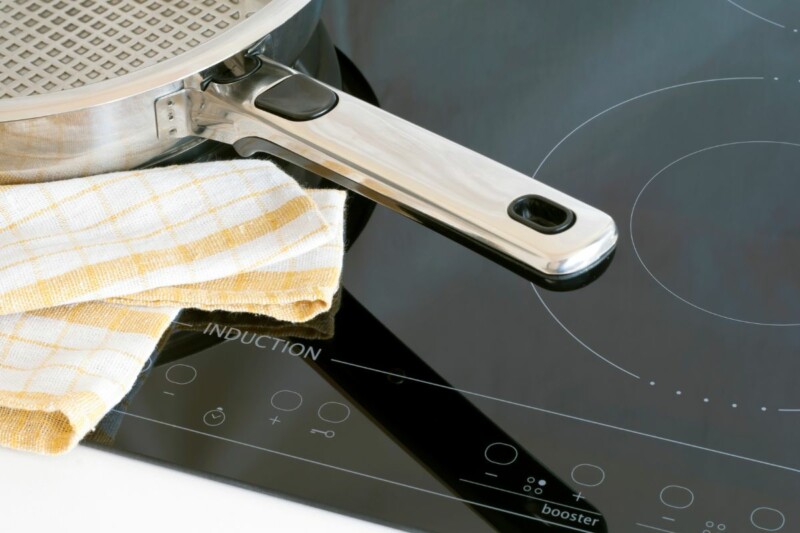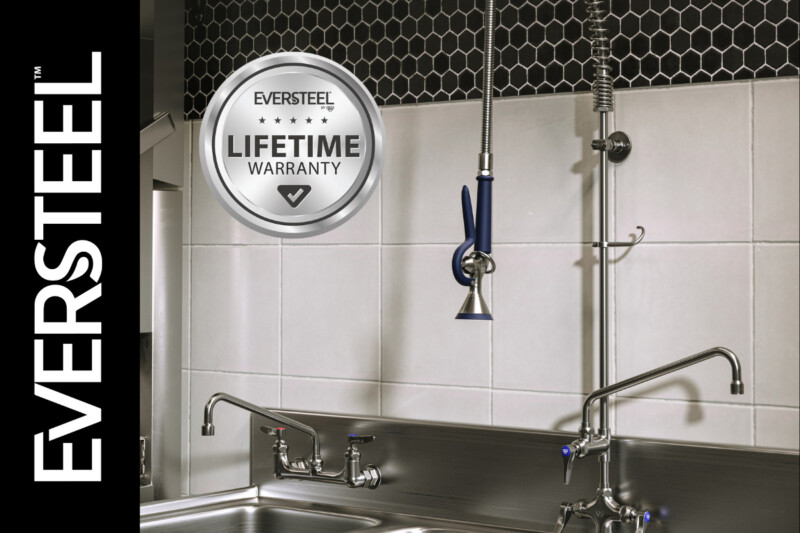Shop Smart
Patrons judge your establishment not only by the food and drink offered, but also by the plates, bowls, glasses and flatware that come to their tables. The right choices show your menu to best advantage and make a statement about what your restaurant represents, whether that’s quality, style and modernity or comfort, informality and tradition.
There’s a great deal riding on tabletop decisions, so it’s vital to get them right. We asked a few leading tabletop sales consultants around the country—New York-based Morgan Tucker, Director of Business Development, M. Tucker/Singer NY; Anne Ladd, Director of Merchandising for Cleveland-based TriMark SS Kemp; and Jennifer Galanis, Director of Business Development, TriMark R.W. Smith & Co. in Los Angeles—to tell us about the purchasing errors customers make again and again. Here are their top tips.
• Buying too much or too little at start-up.
Consultants say they see both, but skimping is more common. “Tabletop supplies are one of your last purchases, and by that time, you may be stretching your budget,” notes Galanis. “Typically you’ll buy too little and then go through the replacement cycle way too fast.” She says initial stocking should be based on the number of seats and the number of table turns expected at dinnertime, but she also takes a close look at the kitchen to assess storage space and the warewashing cycle. The proper size of the initial order will also vary by the type of service offered, the type of food served and the restaurant’s hours of operation.
• Buying high-end or low-end wares that aren’t right for your price point.
“Tabletop can be an investment or an expense,” says Galanis. “If you purchase quality products that are suited to how you’re running your business, you can move forward without constant reordering and constant expenditures.”
How much should you spend? Both menu and labor cost are key, says Ladd. And the type of dishmachine your crew uses serves as another consideration. For an establishment where the costliest entree goes for $20, a dinner plate should cost $8 to $11, she says.
“I don’t think the cost of each dish should exceed the cost of the food being plated on it for one meal,” Tucker says. “If you’re serving $50 steaks, yes, that dish can cost up to $50. I can understand expensive stemware if you have a wine on the menu that warrants it, but spending $12 on a hand-blown glass for an $8 wine is a mistake.”
• Not considering how tabletop will help tell your story.
“It’s important to consider the lifetime of your property and where you want to be in a couple of years,” says Tucker. What’s more important than being on-trend, she says, is being original: “Have your own story; don’t use the same pattern as the restaurant down the street. Draw inspiration from the culinary artisans who have inspired you, but do something unique.”
• Not considering the servers.
“I was at a hotel where the client wanted to serve a shared soup for two in a cast-iron dish,” Galanis says. “I made him hold it filled with liquid to see how heavy it would be for the server to carry, and that changed his mind. Form over function is logistically unrealistic.”
• Not educating staffers to appreciate tabletop as an investment.
If employees are flinging your plates around the dishroom like Frisbees, you’ll be reordering frequently. “Everyone who works in the operation should be aware of the investment made in each piece of cookware—each ladle, each plate,” says Tucker. “If they value them, they’ll treat them with more care.” Galanis suggests posting a list of the items and their cost, and doing a show-and-tell during staff meetings.
• Not understanding the strengths and weaknesses of materials.
One of the reasons some operators balk at higher-price-point china is that they equate “thin” with “fragile,” notes Galanis. But thin, translucent bone china can be strong and durable while offering a beautiful presentation.
Melamine mimics ceramic well. Ladd recommends melamine to her customers for small tabletop accent pieces, such as sugar caddies, but cautions them that it can break down if it’s washed in a low-temp dishmachine with the wrong chemicals. Tucker adds that for operations that are focused on environmental friendliness, she’ll recommend a hybrid material with bamboo or wood content.
Even for flatware, there are differences in materials beyond what’s visible to the eye. For operations where employees accidentally throw away too much flatware when scrapping plates, Galanis recommends 18/0 stainless in combination with magnetized trash-can lids in the dishroom; this nickel-free alloy sticks to magnets (unlike 18/10 and 18/8 stainless).
• Buying too many different pieces in too many shapes.
“Operators can get a ‘toy store’ vision and neglect the true economics and logistics of the tabletop,” Ladd says. “If your focus is truly culinary, you tend to get a lot of different shapes. But our consultant team has to come back and say, do we really need three bowls for soup?”
“Sometimes operators have a grand vision of a perfect plate for each menu item,” says Galanis. Those who get carried away may spend too much upfront and then struggle with where to put it all and how to train staff to use the proper dish or glass for each menu item. Galanis advises operators to invest in timeless multipurpose china and add inexpensive accessory pieces: “Serve your fries in a mini galvanized bucket, or serve cookies with milk in a little glass jar.” Cast-iron soup and cazuela bowls are currently a top choice for operators looking to stand out, she says.
• Trying to cut corners by shopping retail—and forgetting about resupply.
Operators who attempt to save money by picking up accent dishes and glassware over the Internet or from a retailer are usually making a mistake. “People see something they like in a retail store, like Crate & Barrel, but they purchase only a small amount, and the wares aren’t designed for the rigors of foodservice,” says Tucker. “So many foodservice suppliers are doing exciting, artistic creations that I’d be hard pressed to have someone show me something that we couldn’t get in a foodservice version.”
Once breakage of Internet- or retail-purchased wares necessitates replacements, operators return to their tabletop supplier for help, Ladd says, “but we cannot match a closeout. We have to start over. The biggest challenge is that there are so many different whites in restaurant china—we might only be able to find an 80% match.”
Tabletop consultants at full-service dealers work with their clients and suppliers on stocking agreements to ensure that items can be resupplied in a timely manner and with similar wares. They also know which manufacturers can ship replacements quickly, Tucker adds. She singles out large manufacturers with plants in the Americas: “One factory in Mexico can produce and deliver items in less than 10 days.”
• Not considering what goes on diners’ tables.
To determine quantities of tabletop items to purchase, Ladd always begins by asking the client what will be set on the table before guests arrive. Sugar? Salt? Glassware? Bread and butter plates? Flatware? Will the flatware be rolled? More on the table means you’ll need to purchase those items in larger quantities. Setting the table with fewer items makes more work for servers, but also cuts down on pilferage.
Table sizes are changing, with more large community tables and more configurations that staffers can push together or pull apart to accommodate dining parties of different sizes. Small tables, ubiquitous in major urban areas, probably should be kept clear of condiments, and operators may also want to consider smaller-scale plates and flatware. “It just depends on the design of the table,” Ladd says. “If it’s long and narrow, it can look cluttered, and you don’t have room for things that actually produce a profit.”
In New York, tiny tables are a huge issue, says Tucker. Many restaurants now specify smaller glasses as well as appetizer forks and knives to make tables look larger.
In Los Angeles, Galanis asks her clients to serve her their menu items on an actual table. “They sometimes don’t realize the limited amount of real estate they have,” she says. “Once they see how crowded the table is with a wine glass, a cocktail glass and an 11-in. plate, they may switch to a 9-in. plate.”
Particularly for clients specifying smaller plates, she recommends a coupe plate, which holds larger amounts of food more easily than a rimmed plate. (Rimmed plates are necessary for banquet service, since coupe plates can’t be stacked with plate lids.)
Follow these tips to make sure you purchase the right tabletop items and smallwares the first time around, and even more important, make a quality first impression with guests.
RELATED CONTENT
- Advertisement -
- Advertisement -
- Advertisement -
TRENDING NOW
- Advertisement -
- Advertisement -
- Advertisement -


